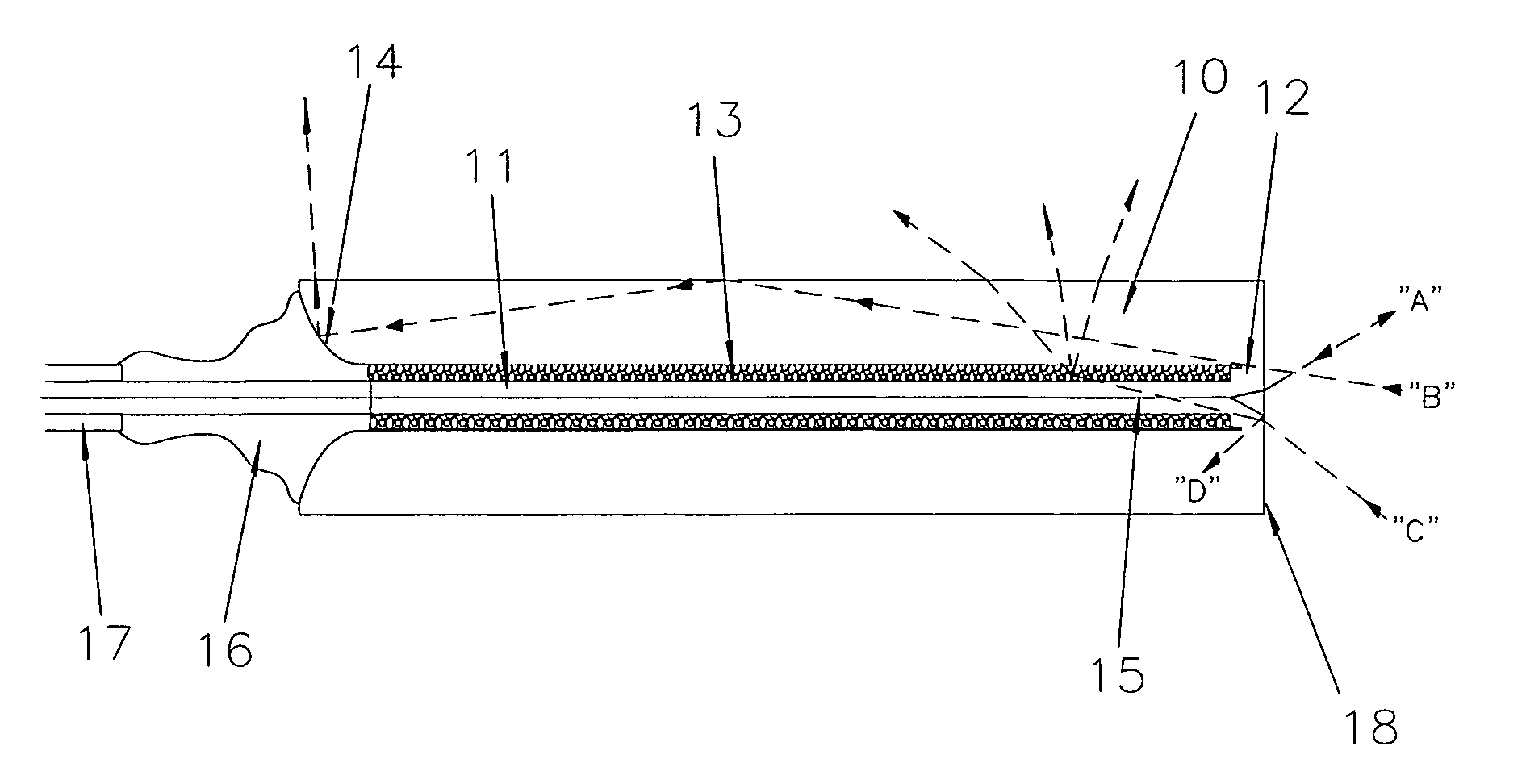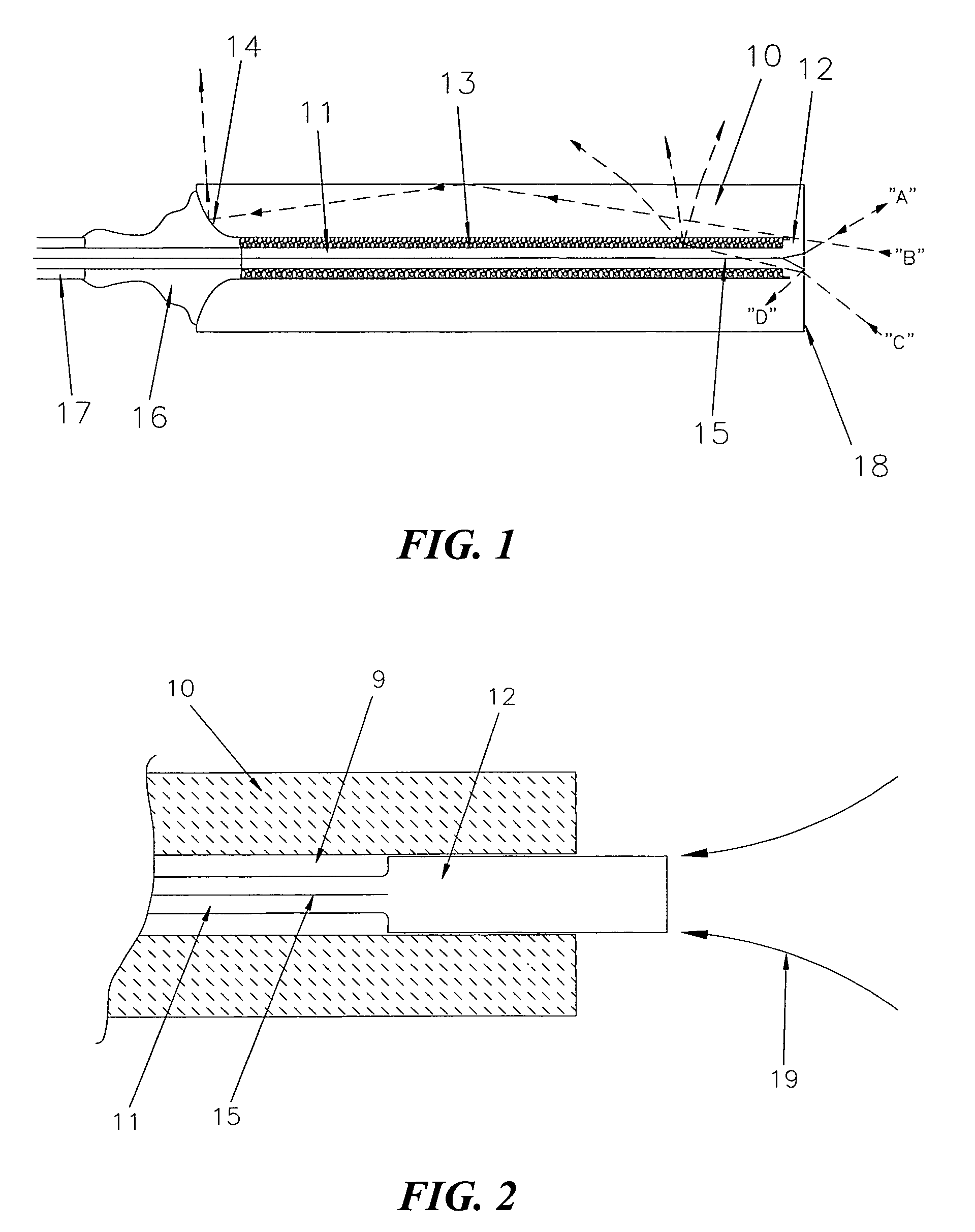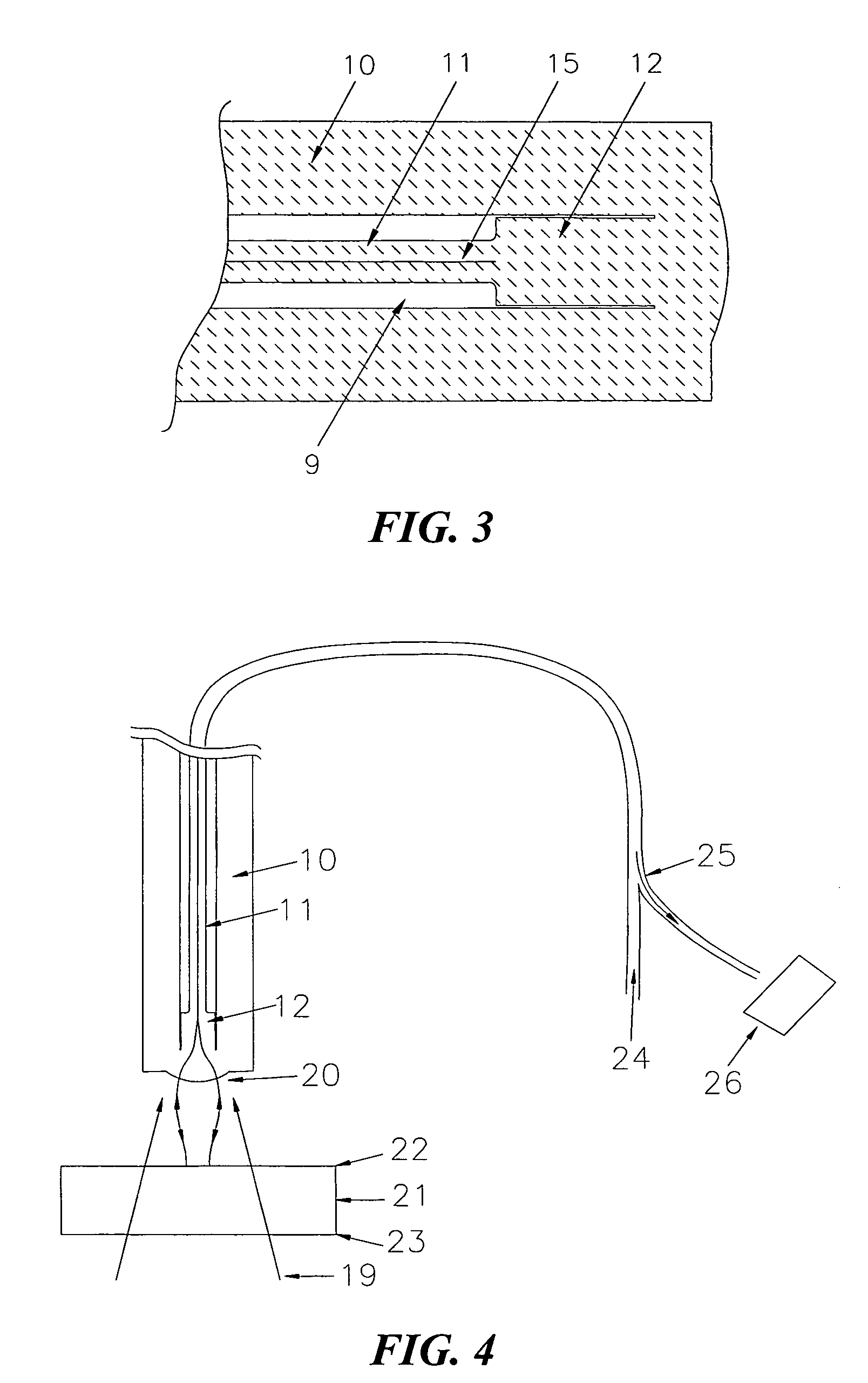Monolithic mode stripping fiber ferrule/collimator and method of making same
a fiber ferrule and monolithic mode technology, applied in the field of optical energy transmission technology, can solve problems such as diffuse scattering, and achieve the effects of reducing the coupling of any reflection, reducing loss, and increasing the optical damage limit of this termination
- Summary
- Abstract
- Description
- Claims
- Application Information
AI Technical Summary
Benefits of technology
Problems solved by technology
Method used
Image
Examples
Embodiment Construction
[0036]Referring to FIG. 1, one embodiment of the invention is illustrated in a cross-sectional diagram. A fiber optic junction is provided by the combination of a fused silica ferrule 10 that has an inner diameter fabricated to a high tolerance to just accept a fused silica coreless fiber stub “endcap”12 (FIG. 2, not to scale) centered within the ferrule 10, and a stripped silica optical fiber 11 with core 15 that is disposed within the ferrule 10 and fused to the endcap 12. By coreless, it is understood to mean a substantially homogeneous element such as a glass fiber that has not been prepared with a core material of fiber. By stripped, it is understood that the polymer coating 17 or jacket has been removed from the outer surface of the fiber in the stripped region. The outer diameter of the stripped region of the optical fiber 11 is sufficiently less than the inner diameter of the ferrule 10 to allow an appropriately fine silica glass powder 13 to occupy and fill the space betwee...
PUM
| Property | Measurement | Unit |
|---|---|---|
| diameter | aaaaa | aaaaa |
| diameter | aaaaa | aaaaa |
| diameter | aaaaa | aaaaa |
Abstract
Description
Claims
Application Information
 Login to View More
Login to View More - R&D
- Intellectual Property
- Life Sciences
- Materials
- Tech Scout
- Unparalleled Data Quality
- Higher Quality Content
- 60% Fewer Hallucinations
Browse by: Latest US Patents, China's latest patents, Technical Efficacy Thesaurus, Application Domain, Technology Topic, Popular Technical Reports.
© 2025 PatSnap. All rights reserved.Legal|Privacy policy|Modern Slavery Act Transparency Statement|Sitemap|About US| Contact US: help@patsnap.com



